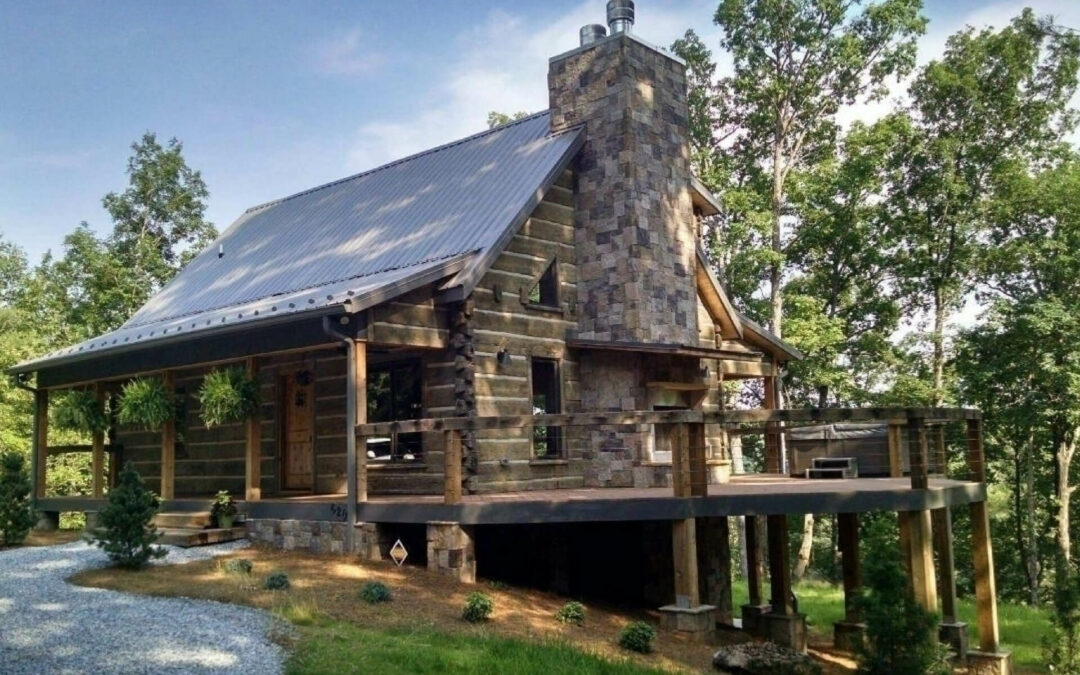Log cabins have a timeless charm that continues to captivate homeowners today. These rustic yet cozy structures offer a peaceful retreat from the hectic pace of modern life. If you are considering building a log cabin, it is crucial to understand the materials that will make your project a success. In this article, we will explore the best building materials for log cabins, from the basics of log cabin construction to the types of wood, insulation materials, roofing materials, and interior finishing options available.
Understanding Log Cabin Construction
Before diving into the world of log cabin building materials, it is essential to have a solid understanding of log cabin construction itself. Building a log cabin requires careful planning and attention to detail. From the foundation to the roof, each element plays a crucial role in creating a sturdy and durable structure. Let us delve into the basics of log cabin building.
The Basics of Log Cabin Building
Log cabin construction typically begins with the foundation. A sturdy and level foundation is essential for the stability of the entire structure. Traditional log cabins often utilize pier-style or slab foundations, while modern log cabins may incorporate more advanced foundation systems.
Once the foundation is in place, the walls of the log cabin are constructed using interlocking logs. This technique not only provides structural integrity but also creates a charming and rustic aesthetic. The logs are carefully selected and fitted together, creating a tight seal that helps to insulate the cabin and keep it cozy during colder months.
As the walls take shape, attention is turned to the roof. The choice of roofing material is crucial, as it must provide protection against the elements while complementing the overall design of the cabin. Common options include asphalt shingles, metal roofing, or even traditional thatch for a more rustic appeal.
Key Factors in Choosing Building Materials
When determining the best building materials for your log cabin, several key factors come into play. These include the availability of materials, local climate conditions, desired aesthetic, budget, and maintenance requirements. Let us delve into each important factor.
Availability of materials is an important consideration. Depending on your location, certain types of wood and other building materials may be more readily available than others. Consulting with local experts or suppliers can help you determine which materials are best suited for your log cabin project. Additionally, sourcing materials locally can contribute to a more sustainable and environmentally friendly construction process.
Climate conditions also play a crucial role. Log cabins in colder climates, for example, require insulation and roofing materials that can withstand harsh winters and heavy snowfall. Understanding the unique requirements of your local climate will guide your choices in building materials. Additionally, considering the impact of climate change and extreme weather events can help you future-proof your log cabin against potential challenges.
Desired aesthetic is another key factor to consider. The choice of wood for your log cabin can greatly impact its appearance. From the warm hues of pine to the rich tones of cedar and oak, each type of wood has its own unique beauty. Selecting the right wood will help you achieve the desired look and feel for your log cabin. Additionally, incorporating architectural details such as handcrafted log trusses or decorative carvings can add a touch of elegance and personalization to your cabin.
Your budget will also influence your choice of building materials. While certain materials may be more expensive initially, they may offer long-term cost savings due to their durability and low maintenance requirements. Balancing your budget with your desired level of quality and longevity is crucial for a successful log cabin project. Additionally, exploring alternative building methods, such as log cabin kits or reclaimed materials, can help you achieve your vision within your budget constraints.
Maintenance requirements are often overlooked but are essential for the long-term preservation of your log cabin. Some building materials, such as certain types of wood or roofing materials, may require more regular maintenance than others. Understanding the maintenance needs of your chosen materials will help you plan for the ongoing care of your log cabin. Regular inspections, cleaning, and treating of the logs and other components will ensure the longevity and beauty of your log cabin for years to come.
Discover the Smart Alternative with Smart Logs of the Carolinas
Ready to build the log cabin of your dreams while embracing sustainability and durability? Smart Logs of the Carolinas offers concrete logs that capture the essence of traditional wood with added benefits. Our logs are not only environmentally friendly and simple to install, but they also boast superior resistance to insects, decay, and extreme weather conditions. With competitive pricing, low maintenance, and energy efficiency, you can enjoy the timeless appeal of a log cabin without the drawbacks. Plus, our concrete logs are designed to cost less than conventional log homes and can even reduce your insurance costs. Don’t compromise on beauty or resilience—choose Smart Logs for your new or existing structure. Contact Us today at 828.781.2015 or visit us at PO Box 6080, Hickory, NC 28603, or email info@mysmartlogs.com to learn more about how we can help you build a log cabin that lasts a lifetime.

